I am clearly misunderstanding how closed curves and filling a closed curve works in PyX. I'm building a closed curve from four parts, but the filling fails depending on how I define one of the four curves. Below is a minimal working/failing example and the output. Why does the first definition of upArc work but the second one does not?
from pyx import *
c = canvas.canvas()
cL = canvas.canvas()
cR = canvas.canvas()
upArc = path.path(path.arc(0,3,1,180,0))
right = path.line(1,3,1,0)
downArc = path.path(path.arcn(0,0,1,0,180))
left = path.line(-1,0,-1,3)
p = upArc+right+downArc<<left
cR.fill(p,[color.rgb.blue])
cR.stroke(p)
upArc = path.path(path.arc(0,0,1,180,0)).transformed(trafo.translate(0,3))
right = path.line(1,3,1,0)
downArc = path.path(path.arcn(0,0,1,0,180))
left = path.line(-1,0,-1,3)
p = upArc+right+downArc<<left
cL.fill(p,[color.rgb.blue])
cL.stroke(p)
c.insert(cL,[trafo.translate(-2,0)])
c.insert(cR,[trafo.translate( 2,0)])
c.writePDFfile("minfail")
A picture of the results.
